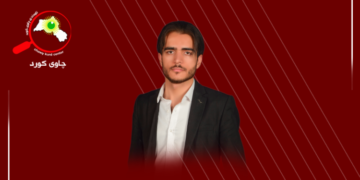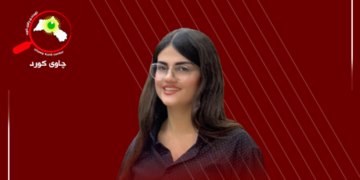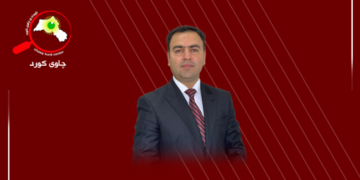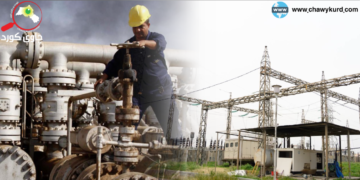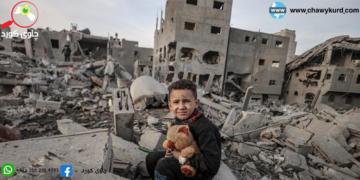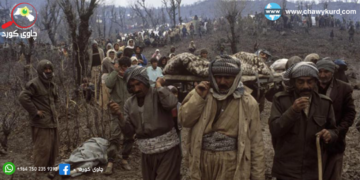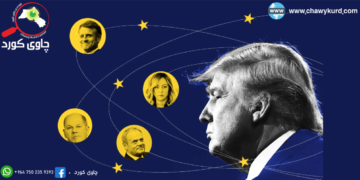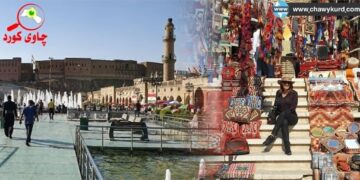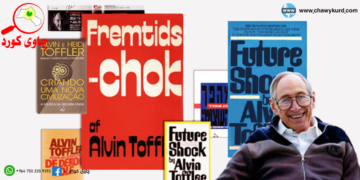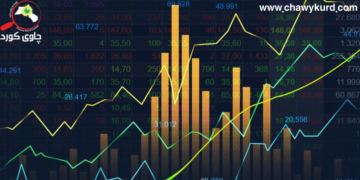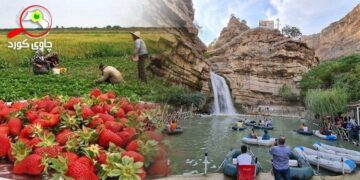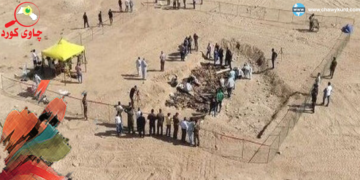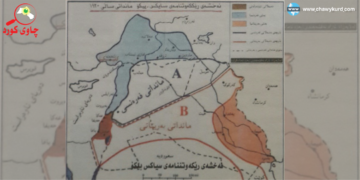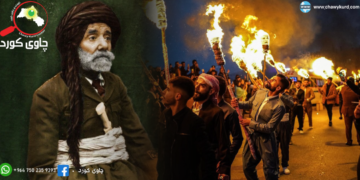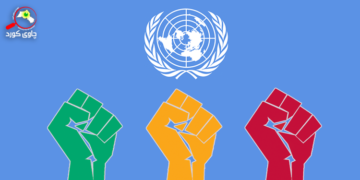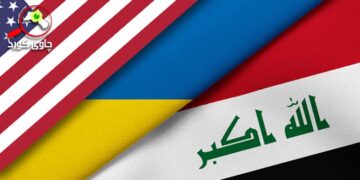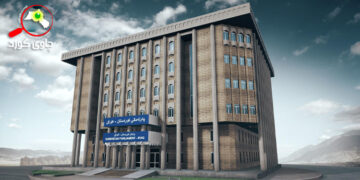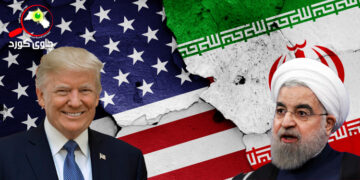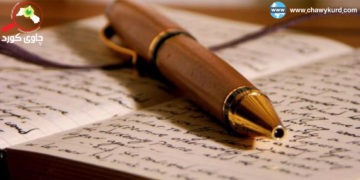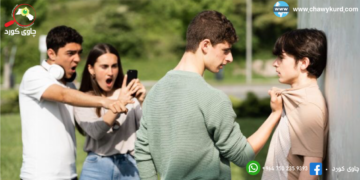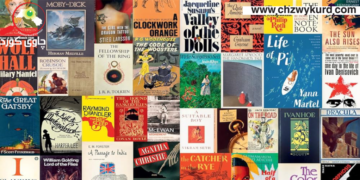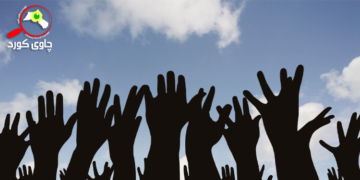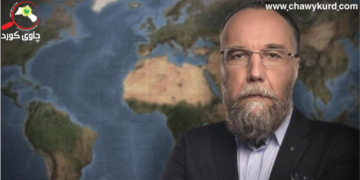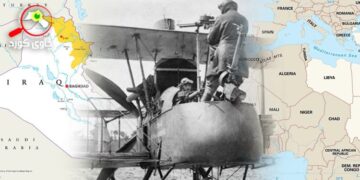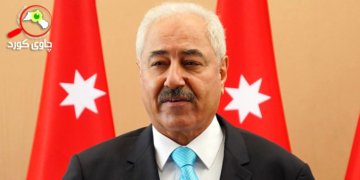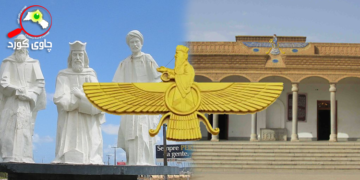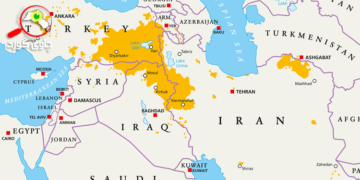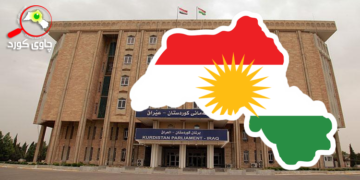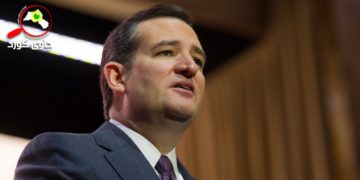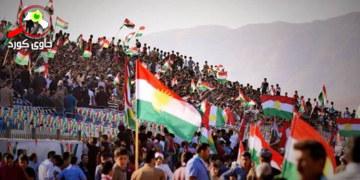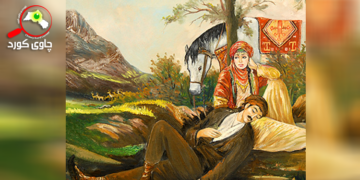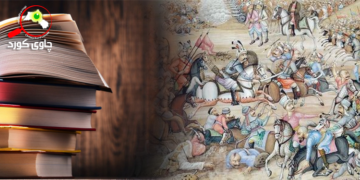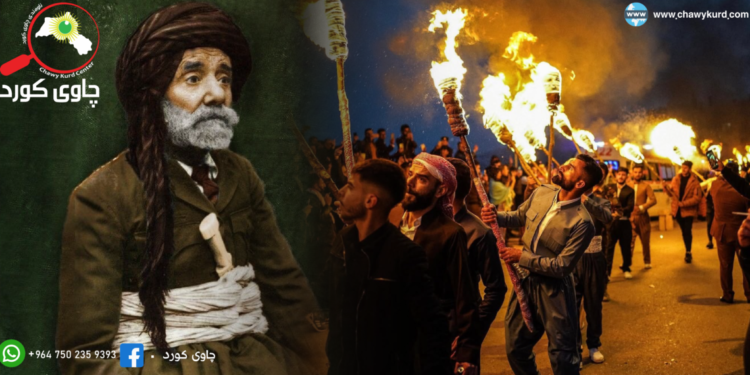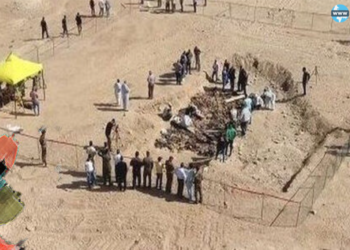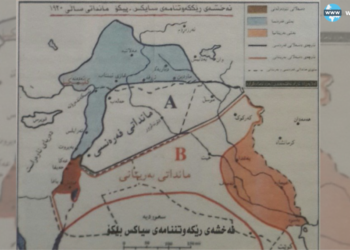On the arrival of Nuroj, let us all gather together, to read and learn about a vast but relatively unknown segment of our beautiful world, a culture of almost 50 million people, the Kurds. The two most revered traditional features of Kurdish culture are The Feast of the Creator (Called in the Kurdish language ‘Jezhne Ezad’, observed annually by the Yazidis, which is closely related to Jezhne KhawenKaar in Yaresan, one of the main ancient Kurdish religions practiced to date. The other equally important feature is the celebration of NuRoj (It can most easily be translated as New Day), and is known as our Kurdish New Year. Every year NuRoj is celebrated on the first day of the Spring Equinox which always occurs on or around March 21.
NuRoj is the day of rebirth and the renewal of our Mother Earth. She is the nurturing Mother of all life. On the day of NuRoj, we celebrate Earth’s ever-giving gifts of life, growth and the nature of her diverse creation in all its wonderful and precarious manifestations. With her timeless care and the generous sharing of her abundance, she has given us an ethereal consciousness filled with joy, hope, and bountiful life. NuRoj reminds us and calls us to take care of all life on earth with love, and most of all, to care for sustainability of our Mother Earth herself, an ineffable gift from our Creator. On this Day, the Kurds give our unending thanks to Afrin-de-Kaar, the Creator of our Earth and all that is encompassed within the vast and boundless reaches of our universe.
Any culture out there, whether secular or religious, with a healthy sense of awe and wonder, may easily relate to our Feast of the Creator, as they may be curious about the question of the origin of the universe looking through their own cultural or mythical lenses of belief. When it comes to learning about the origins of NuRoj, one will do best to refer to the historical as well as the religious texts including traditional oral histories that are readily found in the canon of Kurdish folklore, along with observing practices within present day Kurdish societies.
One of the most common and somewhat gruesome legends often told by Iranians on Newroz is the one that describes a tyrannical king named Zehak, who had two serpents growing on his shoulders. Every day, the king would feed the brains of his enemies to the serpents in order to temporarily satisfy their voracious appetites and by so doing would keep both them and his enemies somewhat under control. If he somehow failed to do this, the ravenous beasts, whose appetites were infamously insatiable, would have devoured even the king himself. Then, as legend had it, a blacksmith named Kaveh [Kawa], famed for his heroic actions as a savior of the king’s countless victims, revolted against the king. Kaveh’s brave revolt was of course an unmitigated success, and ended with the typical killing of the tyrannical king. All the people everywhere became joyful with the sure knowledge that they were now miraculously free and safe again. Upon the news of the death of this tyrant king, all the people poured into the countryside in a region-wide celebration. This is the celebration which the Farsi speaking population in Iran call Newroz.
A more careful study of middle eastern history reveals that this story is of a much newer origin, pure propaganda, and a total fabrication. One might call this ’fake news’, it was essentially a negative political campaign rooted in jealousy launched by a vassal tribe under the Kurdish king’s rule, who really wanted to extricate themselves from the larger, more powerful kingdom of the Medes. The head of the subjugated tribe (Ha-Khoy-Manish aka the Achaemenids), secured the help of the Kurdish blacksmith, Kaveh, who helped to spread the farcical story of the serpents and the king’s fabricated cruelties towards his subjects, the Achaemenids. History has it that after a violent revolt the subjugated tribe, was successful in dethroning the king. The empire of the Medes was then taken over by Cyrus, who was then at that time a minor prince, a grandson of the Kurdish king, living around the year 550 BC. With the king now gone, the subjugated people began their celebration known by the Persians as Newroz.
Another historical account has it that after their triumph around 728 BC with their ensuing cultural and military domination over the various tribes inhabiting the Zagros and Taurus mountains, the Medes began to establish their first regimented government. This organized thinking led to the establishment of the Empire of the Medes which compassed the region from Central Anatolia all the way to Central Asia, under the leadership of King Cyaxares (Kay-Khoy-Sraw). Under Kay-Khoy-Sraw, who is historically regarded as the first Kaiser, the Medes instituted the celebration, NuRoj, to be observed by all peoples within the borders of their kingdom. The Medes, whose name comes from Ma-Da, an ancient word for the Great Mother, or simply DA, or Dayeh, one who encultures and gives us the mother-culture.
The above stories, or a variation of them, including the existence of cultures and customs of people who inhabited the Zagros mountains long before the arrival of Medes around 1700 years B.C., shapes the celebration of NuRoj today.
While holding much respect for the origins of these mythical legends, whether they be fictional or historical stories, this article is written in order to rebuild and recreate forgotten stories and the old traditions of NuRoj. One of the original story about NuRoj dates back to centuries before the rise to power by the Medes and even its celebration as a Spring Festivity held by the indigenous peoples of Mesopotamia. The writing of this article is inspired by a desire to give back to the Kurdish people who hold a deep curiosity within themselves about the spiritual aspects of the celebration known as NuRoj. This article, rooted in history, identifies specific material elements with spiritual meaning and the values that convey the spirit of NuRoj and allows for a truer, more complete display in our homes (or public) during our annual NuRoj celebrations. This article is written to address the key fundamental questions and curiosity about the essence and history of NuRoj, its spiritual meanings of the material elements by which we will celebrate the festivity.
Until recently, due to systematic oppression of Kurdish history and culture over preceding five centuries, beginning with the invasion of Turks in the Middle East, and the lack of many written records of the Kurdish language, there is a lamentable paucity of books in Kurdish currently available to justifiably answer these questions. In order to support and develop this wonderful idea of creating a newly reborn NuRoj tradition from the old one, we can look to the beliefs and customs that are a part of modern-day Kurdish life, culture and faith. We can also look to our rich tradition of our oral history.
Many ancient texts were consulted while researching the contents of this article (and the elements presented here), the rich stories told, have all taken place in Kurdistan, and are readily available in many Western libraries, and it is those manuscripts which have made it possible to answer new questions about old ideas when it comes to the celebration of NuRoj.
Just as the celebration of Easter is the highest and holiest spiritual day in the life of a Christian, and is about Jesus’s resurrection from death to new life, and in a way is a return of Spring out of the cold lifelessness of the Winter, NuRoj too, gives us the same message of renewal and rebirth of life and hope with one difference. In the Kurdish culture, we recognize that this renewal of life is intrinsic to nature itself and has existed long before the existence of humanity and way before we had formed any structures of culture, religion and calendar, to personify this cycle of life in the form of human transfiguration and resurrection. Beside the spiritual sublimity in the divine concept of resurrection and eternal life, there are to be found physical and material elements that represent this rebirth out of death, joy out of sorrow, hope out of despair, warmth out of the cold and dancing and music out bereavement.
This takes us back to the questions asked by a gracious member of the Kurdish American Education Society (KAES), who then asked, how could we revive the ancient traditions of NuRoj, what elements would be selected for display at a NuRoj Table? And what do they signify? KAES is pleased to write this article in response to these contemplative and piercing questions. The ideas of recreating a NuRoj table should start at the foundation, with the use of the traditional floorcloth (Khuani-NuRoj), on which elements of cultural and spiritual values can be displayed during the NuRoj celebration.
Based on a careful and painstaking review of the historical and cultural traditions, twelve items have been selected for display on the NuRoj Table, known by other names as Sufray-NuRoj, or (Khuani- Haft-Tan, which among the followers of Yaresan faith, it means “The Feast of the Seven Archangels”. Some of these elements are common parts of the current celebration along with some new additions that represent deeper historical, and spiritual values, stemming out of a long history of the Kurdish culture. This will be an enrichment to the existing practice of spreading a floorcloth that is used to display items such as tasty confectioneries, flowers, gifts and other valuable items during the traditional 3 days of NuRoj celebration.
The NuRoj Table, suggested here, will start with a flattop table or simply a floorcloth, having at least twelve elements of decoration placed on it with each element having a significant relation to the ancient history of life in Kurdistan as described below:
1- The First Element: Light, A Candle to represent “Roj”, “The Light”, and “fire” of NuRoj. More specifically, the Sun, which is the ancient sky deity responsible for creating light and life. The Sun-god, Mitra or (aka Yazdan), representing unconditional love and steadfast faith. Mitra, as a deity is the “god of Promise” from whose name the word “Mehr-Bahn”, or Highest Love, akin to the Greek word ‘agape’, is derived. A representation of the love of the Sun-god is displayed during the NuRoj celebration, by making bonfires to jump over and chant songs of victory of the light of righteousness, over the evils of oppression, ignorance and deceit. And so, accordingly, the NuRoj Table is to be always decorated safely with light of lit candles and alike.
2- The Second Element: A jug of clean and clear water. Water symbolizes purity and is the source of life. In the Book of Genesis both the Tigris and the Euphrates mentioned have their wellspring in Kurdistan, and flow out of the Garden of Eden. The water should be consumed and replenished daily with at least six cups per day per family member. Also, non-drinking water can be displayed as a small fountain that represents a mountain waterfall, which are plentiful through Kurdistan. In fact, the hanging garden of Babylon was built to console a Kurdish princess named Amethyst who was married to Nebuchadnezzar II to remind her of the water falls of her homeland in the Kurdish mountains north of Babylon.
3- The Third Element: A single stalk or a small stack of wheat next to a freshly grown bed of wheat sprouts. Both should be wrapped with stripes of colorful ribbons. Kurdistan is known to encompass the arch of the Fertile Crescent, known to be a site of the early cultivation of wheat, irrigation and settled agriculture. Wheat roots are longer than its stalk above the ground, a symbolic representation of Kurdistan’s deep history. The placement of harvested stalks of wheat and their green sprouts represents the sustenance of both nutritional and spiritual revival, of life being regenerating from old to new.
4- The Fourth Element: An olive branch (or two) and a measure of olive oil. Next to our beloved oak trees, olive trees are considered the oldest native trees growing in abundance in Kurdistan. Ancient and living olive trees still decorate the site of Khyair-Bash-Ke (translated to: “Share the Gift” Temple, which is over ten thousand years old) also known by the name Gupke-Tepe (a literal translation: a hill puffed up like a cheek), in Urfa, Kurdistan. The olive oil produced in this part of Kurdistan is of the highest quality. This olive oil, virgin and pure, is used to anoint and as a topical medicine. When consumed, one tablespoon a day provides healing powers to both body and spirit. Placement of a small jug of olive oil, and its daily consumption is to be part of the NuRoj celebration.
Additional significance of the olive branch comes from stories of great floods on the plains of Mesopotamia. The story of the first flood takes place in the Sumerian epic of Gilgamesh. What is left from Sumer mentioned in the epic is the town of Sumar, in Kermanshah, near the city of Gilan-eGharb, in the lower plains of Mesopotamia in Eastern Kurdistan. In this story a wiseman named “Utnapishtim” (conjectured as Hatne-Pysht=Generations to come!!), built the first watertight vessel to save his family and humanity from an inundating deluge. He landed his vessel on top of the “Mount of Salvation”, which is located near the city of Suleimani, in Kurdistan. Another name for the Mount of Salvation is Pir-Magrun or Pir-Gurdon, or Pir-Kurdon “The Old Kurd”, perhaps referring to Utnapishtim himself in the Sumerian flood Story! In the story of Noah’s Ark and that Great Flood story, like Utnapishtim, Noah builds a watertight vessel, though, he builds it even larger, and ushered his family on board along with a pair of each creature. This time, after 40 days of non-stop rainfall, and waiting an additional 150 days for the water to recede enough, he landed the ark safely on Mount Kurdu (Mount Judi) near the Kurdish city of Jizra (Cizre). In the historical search for Noah’s Ark, one must also be mindful of a mountain called “Nova-Kueh” (Nova-Mountain), not too far away from the town of Sumar, near the towns of Sarpole-Zau, Krin, and Gilane-e-Gharb in Roj-Halat, Eastern Kurdistan. In Noah’s Flood story, to test if the earth is safe to return to, he finally opened the windows of the ark to let in fresh air and to let a dove fly off to see if she would return or drown in the flood. To his delight the dove returned back to the ark with an olive branch in her beak. This let Noah know that the land had once again emerged from under the water and the olive trees had survived and were growing green again. In Kurdish mythology, this day, when Noah’s dove returned to the Ark, is recognized as the first NuRoj celebration, the day of humanity’s salvation, of cleansing, and the day of rebirth and reemergence of the giving mother earth (Da-Hardeh!).
5- The Fifth Element: is Dry Whey (Kashk), a Milk Product, after water, milk is the primary source of supporting life after birth. For the people on board of Noah’s ark to survive, they fed the animals and used their milk to make food such as ‘leuey, belkaf, maass (yogurt), dew (maass-drink), panir (cheese), ruyn (oil), dry whey, and other milk derivatives. On this new day (NuRoj) when Noah released his family and the animals who were on board the ark, they went forth into the Zagros mountains. With their newly acquired animal husbandry skills that they had mastered and had been so recently honed, they knew how to make good use of the animal products produced on earth, just as they had on the ark. In Kurdish culture, the shepherds, the farmers and the average people, all have great love and respect for the animals who have always helped to sustain human life since the beginning and also during the great deluge. Dew, which is also made from ground dry whey mixed with water makes a healthy beverage to consume year around.
6- The Sixth Element: Fresh fruits and nuts: the five sacred fruits in Kurdish culture are the pomegranate, the fig, the apple, the grapes and also cherries. Wild walnut, almond, pistachio and cherry trees and the other fruits mentioned herein are all native to the Zagros mountains. It is from these that the domesticated varieties we now have are produced today. These are considered to be sacred Kurdish fruits and nuts. Each has a significant meaning as ancient as the land itself.
In the Kurdish Yaresan tradition, The Pomegranate is the source of “Immaculate Conception and Fertility” which from a single aril, the Divine Essence was transferred to a Kurdish virgin woman named Razbar from whom “Sultan Sahak similar to Zehak!, ‘Lord Isaac’, a Yaresan saint”, was born. A belief held by the followers of the Yaresan faith, divine incarnation, like Jesus, Sultan Sahak is believed to be an incarnation of the Divine Essence manifesting itself in human form. We believe it will not be the first, nor will it be the last emanation of the Divine Essence to transfigure itself to human in order to guide us all toward the righteous path.
The Fig, the Zagros mountains are liberally populated with many wild fruit trees, including commonly distributed wild fig trees. Dried wild fig is naturally sweet and can also be displayed as a part of the elements described in element number 7. The leaves of fig trees also have a significant spiritual meaning in Kurdish as they were used by Adam and Eve as clothing to cover themselves. Interestingly enough, the Kurdish language matches this Biblical image of clothing, where we find that the word for clothing in Kurdish which is “Jelow-Berg” which literally means, “Frontal Leaf”. The image in which Adam and Eve are depicted by many classical painters living in the Garden of Eden, shows that their first means to cover themselves was a fig leaf, their “Jelow Berg”.
The Apple, contrary to the notion of being called the fruit of temptation and deception, among the followers of Yaresan faith, an apple is the fruit of health and vigor. It is blessed in spiritual offering ceremonies and distributed as “Bash=Share” to the bystanders. This fruit is best grown in a village known as Tut-Shami, where is the seat of Yaresan. Tut-Shami, is located in a narrow gorge like valley in the Guran region (The Kurdish Apple Valley), where the Zamkan river (conjectured, to be the source of water of Zam-Zam) with its calm crystal-blue waters flows clear still. At the wellspring of the river, there is a spring where members of the faith build a water berm and fill the small pool with apples. These apples are of many hues and colors and it fills one with jubilation to watch them vibrantly bob with each bubbling of the spring, which then makes them cold and crunchy and blessed as they are happily shared amongst the partakers. In the Kurdish culture, a young couple in romance, gives a gift of an apple, ornamented with dried whole clover to symbolize their bond of friendship.
Last but not least among the fruits, at the NuRoj Table there shall be Grapes. From its skin to its seed, the grape has many uses. Known to the ancient dwellers of the Zagros mountains for their ability to make raisins and for the making of spirits. Wine is one of the finest products of the grape, called “Sharr-Au” in Kurdish, which means the “Water of War”. “Sharr” is a Semitic word which means “Conflict”, “Au” means “Water”. If drunk in excess as “mashroob”, “Sharr-Au” will cause troubles and violence. It is also interesting that the oldest brewery to make wine from grapes and beer from grains are found in the Zagros mountains, made by the “Old Kurds of the Mountains” The word for Alcohol, comes from the Kurdish word “Hal-Kul” which means to cook by boiling and reduction. The above assortments of fruits not only bring a variety of hues and colors to the NuRoj table but also a taste of health and vigor that we need to replenish ourselves during the yearly celebration of NuRoj, which can be rightfully called Earth’s birthday emerging out of water! Among the nuts, walnuts hold a predominately special place.
The walnut is held sacred because it resembles the shape of a human brain, the source of human’s intellect, reasoning and wisdom. In a rite of passage ceremony, followers of Yaresan make use of the walnut, especially one that comes in a thick shell, (or if they can’t find one, a nutmeg or a macadamia nut) to break before the eyes of a teenage child as she/he is initiated into the Yaresan faith. Symbolically, he or she breaks (opens) his or her own “thick” nutshell (Skull) so the light of truth, of reason and righteousness enters the brain.
Wild pistachio and almond are used as spring snacks (green wenaushk, and green soaked almonds are examples). Like frankincense and myrrh, their fragrant bark produces saps and resins that have both nutritional and medicinal uses with aromatic smoke when burnt.
7- The Seventh Element: Sweet Confectionery: The seventh element used to decorate the NuRoj Table (Khuane-Haft-Tan), is a variety of natural and homemade sweets. Kurdish sweets mostly consist of dried fruits or flour from nuts and grains with milk and butter. Examples are dried figs and dates, and pastrieslike Beji, Gerdeh, Ghymagh (Kaymak) which are prepared with spices like cumin, fennel, zafron, turmeric, wild honey and other herbs and spices which are native to Kurdistan. On the traditional Kurdish NuRoj floorcloth, the elements of 5 and 7 are placed next to each other and may need replenishment as these are for visiting guests and for children to enjoy during the three days of the NuRoj celebration.
8- The Eight Element: Flowers. In the spring time, the Kurdish mountains display an amazing array of flowers that vary in shape, color and scents. Among the most famous are the daffodils (Nargis, which is the traditional symbol of NuRoj), the Inverted Tulips (Shlyr), Poppies (Gule-Soreh), Hyacinth (Sumbol), Roses (Gul-bakhi) and more. Decorating the NuRoj Table with any of these flowers will bring a spirit of freshness, joy and the promising fragrances of Springtime into the home.
9- The Ninth Element: A Story Telling Book. This book (or books) can be of a personal choice that parents will read to their children, or may read to themselves to remember stories of joy and the triumph of one’s good virtues. They can be books of one’s faith, of poetry, or of their family history.
10- The tenth Element: A Treasure Box. It is customary that for NuRoj, parents buy their children the gifts of new clothing and to give newly printed, unused currency bills. Children receiving a gift of a small gold coin is a highly valued tradition since it is a symbol of untarnished faith in moral virtues, family values, generosity and sharing and the distributing of wealth to others.
11- The Eleventh Element: A Wish Box, (Mejri-Arezu) also called a Resolution Box. In this box, parents and children can make a wish for each other or write a note to each other, in order to help make the coming New Year a better one for all family matters, and see all their hopes, wishes and goals be achieved.
12- The Twelfth Element: A Book of Blank Notes. This little note book should be given as a gift to each child, and shall be used throughout the coming year for everyone to write their own memories of the important events and experiences throughout the coming year. Both good times and sad times, and also for the writing down of thoughts and ideas that inspire them along the way to a better and brighter future. Over the years, the note books can be a collective reference to write one’s own or their family’s history.
The preparation for the arrival of NuRoj begins days in advance, with each family spreading a floorcloth or a table, decorated with the above elements arranged according to their liking and artistic creativities. On the precise moment of the arrival of NuRoj, the Spring Equinox, the Nuroj celebration starts, first with all family members greeting and embracing one another and wishing for each other an auspicious happy new year ahead, followed by a gift exchange and a visiting of neighbors and relatives. Gradually people make their way outside to the open fields, and to the foothills of the mountains where many bonfires are made to victoriously jump over. Musicians are drumming and singers are singing and people are dancing wearing a multitude of colors while many multiple floorcloths of a variety of different colors are lovingly spread and filled with goodies and delicious foods of all sorts to be shared with friends and family and even with strangers who happen to come by for a visit to wish “NuRojet Pir-Roj! (Happy New Year)”.
May all these meaningful and traditional yet forgotten, elements of our spiritual traditions decorate your home and life and continue to lift your spirits with joy and in abundant good health throughout all the year and at your every NuRoj celebration!!
Happy NuRoj!
In Health, Peace, and Prosperity,
Ardishir Rashidi-kalhur
Kurdish American Education Society.
Ardishir Rashidi-Kalhur, the President of Kurdish American Education Society, Los Angeles, U.S.
cited: https://theinsightinternational.com/spiritual-revival-forgotten-traditions-2022-03-18

